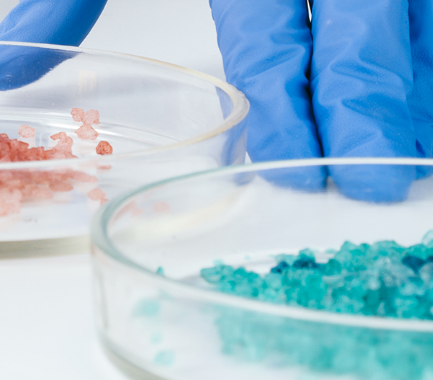Your contact
PENPET-Team - Hamburg

Christoph Meister
Sales
Tel. +49 (0) 40 - 675 7 99 30
sales@penpet.de
Get in touch with us.
Butyl triglycol
Butyl triglycol is an organic compound from the glycol ether group, which is mainly used as a solvent. The substance is contained in cleaning products, wood preservatives, brake fluids, textile dyes and printing inks, among other things. In addition, butyl triglycol serves as a plasticizer and as an intermediate product for synthesis processes in the chemical industry. In large-scale processes, the compound is produced on the basis of ethylene oxide and n-butanol.
At PENPET you get butyl triglycol of the highest quality, from a reliable partner who will also meet your requirements in the long term. We look forward to receiving your inquiry for an individual offer. The liquid can be delivered punctually and in bulk in tankers or containers, as well as in IBC packs and drums of various weights.
CAS no. 143-22-6
EINECS no. 205-592-6
Molecular formula: C10H22O4
Synonyms: butyl triglycol, triethylene glycol monobutyl ether, TEGBE, 2-[2-(2-butoxyethoxy)ethoxy]ethanol, buteth-3
Areas of application: Used as a solvent, plasticizer and intermediate in the manufacture of organic compounds
More Information
Butyl triglycol is a triple ether whose molecules are composed of three ethylene glycol residues and the residue of n-butanol. This structure becomes clear from the alternative designation triethylene glycol monobutyl ether. The long, linear compound therefore has three ether groups and a hydroxy group on the terminal ethylene glycol residue. These four functional groups account for the substance's solubility in polar solvents and determine its reaction behavior. Butyl triglycol can, for example, build up further, more complex ether structures by dissolving the hydroxy group or undergo esterification with a carboxylic acid. As an ether, butyl triglycol tends to form hazardous peroxides in air.
Butyl triglycol exists as a liquid under normal conditions. The colorless to slightly yellowish compound is hardly volatile and only has a faint odor. Butyl triglycol is hygroscopic and attracts moisture. The substance is very soluble in water and many organic solvents such as methanol and ethanol. Butyl triglycol is very temperature resistant and only boils when heated to over 278 °C. The melting point for the transition of the compound into the solid state of aggregation is -35 °C.
When stored as intended, butyl triglycol is chemically stable. However, if it comes into contact with aluminum or strong oxidizing agents, violent, dangerous reactions can occur. Butyl triglycol is flammable but difficult to ignite. When the substance is heated, it can form explosive mixtures of its vapors with the ambient air. The compound must therefore be kept away from possible sources of ignition such as hot surfaces, mechanically generated sparks, open flames and electrical discharges. Dangerous levels of carbon dioxide and carbon monoxide can be released when butyl triglycol is burned.
Acute health hazards emanate from butyl triglycol. The compound can cause severe irritation, redness, swelling, and scaling and scabs on the skin. Affected parts of the body should be thoroughly rinsed with water. In the event of massive exposure, a medical examination should be arranged. Severe irritation and edema as well as clouding of the cornea and scarring can also occur in the eye. After direct contact with the liquid, the eyes should be rinsed thoroughly with water and an ophthalmologist should be consulted immediately.
Inhalation of aerosols or vapors of the compound may cause painful respiratory irritation. If butyl triglycol is swallowed, severe irritation of the mouth, esophagus and stomach lining can occur. Gastrointestinal symptoms such as stomach cramps, abdominal pain, nausea, vomiting and diarrhea are also to be expected. If butyl triglycol is absorbed into the metabolism, disorders of the central nervous system such as feelings of tiredness, drowsiness, coordination difficulties, breathing difficulties and organ damage to the liver and kidneys are possible. If you suspect that you have ingested large amounts of the compound, call an ambulance immediately.
Butyl triglycol has been classified as slightly hazardous to water due to possible damage to aquatic organisms. Prevent the compound from entering the ground, water bodies or waste water. The escape of larger quantities of butyl triglycol into the environment must be reported to the competent authorities. The substance is not subject to any special transport regulations.
